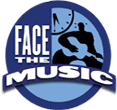AHA!
Great Moments in Creativity
by Mitchell Ditkoff
What is it that enables some people to get big creative breakthroughs while others only get big not-so-creative breakdowns - alternately blaming themselves, society, their boss, and their increasingly suspect astrological configurations? Is it that some people are "gifted"? Or are there other factors at work - factors that we (the people) have more control over than we might think?
 While nobody can deny the fact that some people seem to be blessed with particular creative leanings (i.e. Mozart at 4), research has shown that anyone can increase their chances of coming up with new and original ideas - even have the much sought after AHA! experience - that is, IF they would only immerse themselves in the little understood process of creation. It's the old Thomas Edison thing about "discovery being 99 percent perspiration and 1 percent inspiration". Time and again, the literature bears this out: great creative breakthroughs usually happen only after intense periods of struggle - even madness. It is sustained and focused effort towards a specific goal - not luck, not wishing, not caffeine - that ultimately prepares the ground for great creative insights.
While nobody can deny the fact that some people seem to be blessed with particular creative leanings (i.e. Mozart at 4), research has shown that anyone can increase their chances of coming up with new and original ideas - even have the much sought after AHA! experience - that is, IF they would only immerse themselves in the little understood process of creation. It's the old Thomas Edison thing about "discovery being 99 percent perspiration and 1 percent inspiration". Time and again, the literature bears this out: great creative breakthroughs usually happen only after intense periods of struggle - even madness. It is sustained and focused effort towards a specific goal - not luck, not wishing, not caffeine - that ultimately prepares the ground for great creative insights.
Of course, this kind of perseverance does not always generate immediate results, a fact that not only separates the wheat from the chaff, the innovators from the enervators, but also leads some people to conclude that it's just not in the cards for them. "Maybe I should have gone to medical school like my mother wanted", they wonder when the breakthrough is nowhere to be found. Alas, one forgets during their inevitable encounters with self-doubt, that the BIG AHA! is never far away. Indeed, it can happen at any time, any place, under any condition. Indeed, it's happened to more people than you could shake a therapist at - famous people, infamous people, unfamous people. Anyone and everyone. As long as they stay in the game…
RENE DESCARTES
Recognized as the "father of modern science," Rene Descartes offers a very interesting footnote to the history of "creative breakthrough." An exceptionally gifted student in 17th century France, young Rene dropped out of school at the age of 17 upon realizing that the only thing he had learned was that he was completely ignorant. Law school proved no better, nor did a brief stint in the military, or an aborted career as a gambler. Frustrated with the choices available to him, Descartes simply decided to retire at the ripe old age of 20. While his parents, teachers, and friends pleaded with him to change his mind, young Rene was adamant, and for the next two years did little else but stay in bed, read, think, dream, and write.
Curiously, one night in the second year of his retreat, Descartes had a dream in which the essence of what we now know as the "scientific method" was revealed to him. In time, his discovery was shared with the scientific community and Western science had a new hero. Ah, but the paradox of it all! While scientists far and wide heralded Descartes for his contribution to Western, rational science, no one (in their right mind) would acknowledge that the root of Descartes' discovery (and indeed, the root of what most scientists today base their knowledge on) came to him in a dream - a non-rational, non-linear, altered state of consciousness in the mind of a total dropout!
Descartes story is not at all uncommon. The truth, the breakthrough, the AHA! came to him only after years of intense conscious effort. Like ripe fruit, the answer made its appearance at the right time - a time when he wasn't trying, but had let himself be receptive to the promptings of his own subconscious mind.
ELIAS HOWE
Elias Howe had struggled for years in his attempt to invent a lockstitch sewing machine. His early designs, though inspired, were flawed. Indeed, the needle he designed had a hole in the middle of the shank, which simply didn't work. Then, one night, depressed at how slowly things were going, Howe dreamed he was captured by a bunch of savages who took him prisoner before the King. "Elias Howe," screamed the monarch, "I command you upon the pain of death to finish this machine at once!" Try as he might, however, Howe still could not find the solution. The King, making good on his word, immediately ordered his troops to take Howe to the place of "execution" (dream pun intended), As Howe was being led away, he looked up and noticed that the spears the savages were carrying had eye-shaped holes near the top! Voila! In a flash, Howe awoke, jumped out of bed, and spent the rest of the night whittling a model of the new, improved needle - the design breakthrough that quickly brought his experiments to a successful conclusion.
RICHARD WAGNER
At the age of 40, Richard Wagner was going through a serious mid-life crisis. His artistic career was stalled, his marriage was falling apart, and his finances were in shambles. Desperate, he decided to travel, hoping to find some inspiration. Traveling, however, only tired him. Then, one morning, just at the moment when he finally gave up on his frantic effort to invoke his muse, Wagner heard a musical theme in a dream - one that was about to change his life and the history of music.
Explained Wagner, "After a night spent in fever and sleeplessness, I forced myself to take a long walk through the country. It looked dreary and desolate. Upon my return, I lay down on a hard couch. Sleep would not come, but I sank into a kind of somnambulance, in which I suddenly felt as though I were sinking in swiftly flowing water. The rushing noise formed itself into a musical sound, the chord of E flat major, whence developed melodic passages of increasing motion. I awoke in sudden terror, recognizing that the orchestral prelude to Das Rheingold, which must have lain long latent within me, had at last been revealed to me. I decided to return to Zurich at once and begin the composition of my great poem."
MOZART
A prodigy? Yes. Gifted? Yes. Unusually receptive? Yes. But also very tuned in to the state of mind that preceded great creative breakthroughs: Explained Mozart, "When I am, as it were, completely myself, entirely alone, and of good cheer - say traveling in a carriage or walking after a good meal, or during the night when I cannot sleep; it is on such occasions that my ideas flow best and most abundantly. Whence and how they come, I know not, nor can I force them. Those pleasures that please me, I retain in memory, and am accustomed... to hum them to myself. If I continue in this way, it soon occurs to me how I may turn this or that morsel to account, so as to make a good dish of it....agreeably to the rules of counterpoint, and to t he peculiarities of the various instruments. All this fires my soul, and provided I am not disturbed, my subject enlarges itself, becomes methodized and defined, and the whole, though it be long, stands almost complete and finished in my mind, so that I can survey it, like a fine picture or a beautiful statue, at a glance. Nor do I hear in my imagination the parts successively, but I hear them.....all at once. What a delight I cannot tell! All this inventing, this producing, takes place in a pleasing lively dream...."
RUDYARD KIPLING
Many people who experience supernormal moments of great creativity report a willingness to let themselves be open to the non-logical, non-linear, and unexplainable promptings of an inner voice. Maybe you call it a "hunch" or "intuition," but whatever you call it, know that paying attention to it is often the key to manifesting your vision or idea. Rudyard Kipling, the English writer, was very much in touch with this faculty. "Most men," wrote Kipling, "keep their personal Daemon (guardian spirit) under an alias which varies with their literary or scientific attainments. Mine came to me early when I sat bewildered among other notions. 'Take me and no other,' it said. I obeyed and was rewarded. After that, I learned to lean upon him and recognize the sign of his approach. If ever I held back anything of myself (even though I had to throw it out afterwards), I paid for it by missing what I knew the tale lacked.....I took good care to walk delicately, lest my Daemon should withdraw. I know that he did not, because when my books were finished they said so themselves with almost the water-hammer click of a tap turned off........'Note here.' When your Daemon is in charge, do not try to think consciously. Drift, wait, and obey...."
KEKULE
It is not only writers and composers that have creative breakthroughs. Molecular scientists do, too. Notes the Flemish scientist, Kekule: "One fine evening I was returning by the last bus through the deserted streets of the metropolis, which are at other times so full of life. I fell into a reverie, and lo! the atoms were gamboling before my eyes. Whenever those diminutive beings had appeared to me before, they had always been in motion, but I had never been able to discern the nature of their motion. Now, however, I saw how frequently, how smaller atoms united to form a pair; how a larger one embraced two smaller ones; how still larger ones kept hold of three or even four of the smaller, while the whole kept whirring in a giddy dance. I saw how the larger ones formed a chain....I spent part of the night putting on paper at least a sketch of these dream forms."
Then, years later, the big illumination: "I turned my chair to the fire and dozed. Again the atoms were gamboling before my eyes. This time the smaller groups kept modestly in the background. My mental eye, rendered more acute by repeated visions of this kind, could now distinguish larger structures....long rows, sometimes more closely fitted together; all twining and twisting and snakelike motion. But look! What was that? One of the snakes had seized hold of its own tail, and the form whirled mockingly before my eyes! As if by a flash of lightening I awoke. Let us learn to dream, gentlemen."
Kekule had made a most remarkable discovery - that benzene is a cyclic or ring structure and the carbon chain at the molecular core of the compound does indeed form a chain that "swallows its own tail".
TCHAIKOVSKY
OK, all you aspiring creators, how about a tip from the man who composed the Nutcracker Suite? "Generally, the germ of a future composition comes suddenly and unexpectedly...It takes root with extraordinary force and rapidity, shoots up through the earth, puts forth branches and leaves, and finally blossoms....I forget everything and behave like a mad man. Everything within me starts pulsing and quivering. Hardly have I begun the sketch, before one thought follows another. In the midst of this magic process, it frequently happens that some external interruption awakes me from my somnabulistic state....Dreadful indeed are such interruptions....They break the thread of the inspiration."
WHAT, IF ANYTHING, IS IN THE WAY OF YOU HAVING AN AHA?
WHAT CAN YOU DO TO ATTRACT AN AHA! EXPERIENCE?
WHAT RECENT AHA OF YOURS DO YOU NEED TO ACT ON?
|
 |
Top News & Offerings
MitchDitkoff.com
 Click here
Click here for the simplest, most direct way, to learn more about Idea Champions' semi-fearless leader, Mitch Ditkoff. Info on his keynotes, workshops, conferences, and more.
Storytelling for the Revolution
 Storytelling for the Revolution
Storytelling for the Revolution is Mitch Ditkoff's newly published book about the power of personal storytelling to elevate the conversation on planet Earth. Provocative. Evocative. And fun. YOU have stories to tell. This book will help you tell them.
Storytelling at Work

"The world is not made of atoms," wrote the poet, Muriel Rukeyser. "It's made of stories." Learn how to discover, honor, and unpack the stories of yours that show up "on the job" in Mitch Ditkoff's award-winning 2015 book, Storytelling at Work.
Mitch Ditkoff, the Co-Founder and President of Idea Champions, has recently been voted a top 5 speaker in the field of innovation and creativity by Speakers Platform, a leading speaker's bureau.
Workshops & Trainings

Highly engaging learning experiences
that increase each participant's ability to
become a creative force for positive change
Brainstorm Facilitation

High impact certification training that teaches
committed change agents how to lead
groundbreaking ideation sessions
Cultivating Innovation

Your "best and brightest" are the future leaders of your company, but unless they know how to foster a culture of innovation, their impact will be limited. A one-day workshop with us is all they need to begin this journey.
Our Blog Cabin

Our Heart of Innovation blog is a daily destination for movers and shakers everywhere — gleefully produced by our President, Mitch Ditkoff, voted "best innovation blogger in the world" two years running.
Team Innovation

Innovation is a team sport. Brilliant ideas go nowhere unless your people are aligned, collaborative, and team-oriented. That doesn't happen automatically, however. It takes intention, clarity, selflessness, and a new way of operating.

If you're looking for a powerful way to jump start innovation and get your creative juices flowing,
Awake at the Wheel is for you.
Written by Mitch Ditkoff, Co-Founder and President of Idea Champions.
|

 Click here for the simplest, most direct way, to learn more about Idea Champions' semi-fearless leader, Mitch Ditkoff. Info on his keynotes, workshops, conferences, and more.
Click here for the simplest, most direct way, to learn more about Idea Champions' semi-fearless leader, Mitch Ditkoff. Info on his keynotes, workshops, conferences, and more.
 Storytelling for the Revolution is Mitch Ditkoff's newly published book about the power of personal storytelling to elevate the conversation on planet Earth. Provocative. Evocative. And fun. YOU have stories to tell. This book will help you tell them.
Storytelling for the Revolution is Mitch Ditkoff's newly published book about the power of personal storytelling to elevate the conversation on planet Earth. Provocative. Evocative. And fun. YOU have stories to tell. This book will help you tell them.
 "The world is not made of atoms," wrote the poet, Muriel Rukeyser. "It's made of stories." Learn how to discover, honor, and unpack the stories of yours that show up "on the job" in Mitch Ditkoff's award-winning 2015 book, Storytelling at Work.
"The world is not made of atoms," wrote the poet, Muriel Rukeyser. "It's made of stories." Learn how to discover, honor, and unpack the stories of yours that show up "on the job" in Mitch Ditkoff's award-winning 2015 book, Storytelling at Work.

 Highly engaging learning experiences
that increase each participant's ability to
become a creative force for positive change
Highly engaging learning experiences
that increase each participant's ability to
become a creative force for positive change
 High impact certification training that teaches
committed change agents how to lead
groundbreaking ideation sessions
High impact certification training that teaches
committed change agents how to lead
groundbreaking ideation sessions
 Your "best and brightest" are the future leaders of your company, but unless they know how to foster a culture of innovation, their impact will be limited. A one-day workshop with us is all they need to begin this journey.
Your "best and brightest" are the future leaders of your company, but unless they know how to foster a culture of innovation, their impact will be limited. A one-day workshop with us is all they need to begin this journey.
 Our Heart of Innovation blog is a daily destination for movers and shakers everywhere — gleefully produced by our President, Mitch Ditkoff, voted "best innovation blogger in the world" two years running.
Our Heart of Innovation blog is a daily destination for movers and shakers everywhere — gleefully produced by our President, Mitch Ditkoff, voted "best innovation blogger in the world" two years running.
 Innovation is a team sport. Brilliant ideas go nowhere unless your people are aligned, collaborative, and team-oriented. That doesn't happen automatically, however. It takes intention, clarity, selflessness, and a new way of operating.
Innovation is a team sport. Brilliant ideas go nowhere unless your people are aligned, collaborative, and team-oriented. That doesn't happen automatically, however. It takes intention, clarity, selflessness, and a new way of operating.
 If you're looking for a powerful way to jump start innovation and get your creative juices flowing,
Awake at the Wheel is for you.
Written by Mitch Ditkoff, Co-Founder and President of Idea Champions.
If you're looking for a powerful way to jump start innovation and get your creative juices flowing,
Awake at the Wheel is for you.
Written by Mitch Ditkoff, Co-Founder and President of Idea Champions.
 The world's first interactive business blues band.
A great way to help your workforce go beyond complaint.
The world's first interactive business blues band.
A great way to help your workforce go beyond complaint.
 While nobody can deny the fact that some people seem to be blessed with particular creative leanings (i.e. Mozart at 4), research has shown that anyone can increase their chances of coming up with new and original ideas - even have the much sought after AHA! experience - that is, IF they would only immerse themselves in the little understood process of creation. It's the old Thomas Edison thing about "discovery being 99 percent perspiration and 1 percent inspiration". Time and again, the literature bears this out: great creative breakthroughs usually happen only after intense periods of struggle - even madness. It is sustained and focused effort towards a specific goal - not luck, not wishing, not caffeine - that ultimately prepares the ground for great creative insights.
While nobody can deny the fact that some people seem to be blessed with particular creative leanings (i.e. Mozart at 4), research has shown that anyone can increase their chances of coming up with new and original ideas - even have the much sought after AHA! experience - that is, IF they would only immerse themselves in the little understood process of creation. It's the old Thomas Edison thing about "discovery being 99 percent perspiration and 1 percent inspiration". Time and again, the literature bears this out: great creative breakthroughs usually happen only after intense periods of struggle - even madness. It is sustained and focused effort towards a specific goal - not luck, not wishing, not caffeine - that ultimately prepares the ground for great creative insights.
